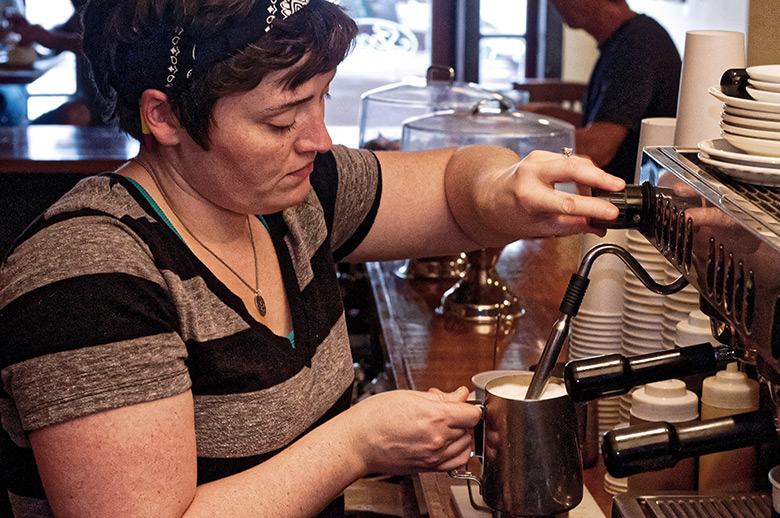New Year, New Coffee: Skimmed Milk all the things!

As you’d come to expect post-Christmas, the New Year is rightly or wrongly seen as a fresh start for hundreds of thousands across the globe who feel that an arbitrary date change is the catalyst for a complete lifestyle overhaul.
But being less cynical, if your coffee shop isn’t on board with this change in public taste and health-consciousness, then you likely aren’t doing the right things.
Whilst we are advocates for proper Italian quality coffee classics, the time for whole milk is not January. It’s time for your business to embrace the skimmed milk and the ‘skinny’ coffee option.
Firstly, let’s bang on about how the fat within milk has a direct bearing the quality of milk foam you are able to achieve on your milky coffee drinks.
The more fat content, the better quality of foam and those microbubbles, due in basic terms to the milk proteins found within.
We’ve talked about it more in-depth in the past, where we explain why different coffee does indeed taste different. Go read that and wisen yourself to the intricacies of grind, grain and milk fat content.
To add, whilst skimmed milk needs a little more attention, it can actually make more foam than whole milk given the right amount of attention, the microfoam created is down to the skill of the barista.
How to froth/foam low-fat milk
Let’s contradict ourselves for just a short moment and explicitly say that low-fat or skimmed milk is actually easier to foam or froth.
With little to no fat content, you can create light and airy foam, but it does tend to lack the flavour associated with ‘proper’ whole milk.

The other issue with low-fat milk is that the foam and liquid milk separate very easily, so you can have lovely foam, but it doesn’t remain stable for long enough.
- Get that milk cold – Milk (regardless of type) foams best the colder it is. It’s a case of density, the colder the milk, the denser.
- If the milk is near it’s ‘Use By’ date, consider getting fresher milk – Fat within milk tends to break down over time even if you keep it in the fridge, the simple science blames free glycerol. Just get fresh milk regularly.
- Focus on getting the milk pitching within your milk jug – This allows the milk and foam to intertwine and create a thick and velvety mixture that will be ‘structurally sound’.
- Lower the pressure of steam as you foam the milk – By lowering the pressure you decrease the air being added, this is crucial with low-fat content milk as it helps create smaller microbubbles that create that velvety milk foam we all know and love.
- Practice – It’s obvious, but practice does make perfect. This is unlikely something you’ll be able to achieve overnight, it takes time and each batch of milk can prove it’s own challenge. So put in the hours getting it right.
- …Or simply use whole milk – Cop out and use whole milk and you’ll have milky drinks that will have the purists purring.
This isn’t simply a case of bowing to customers whims.
Treat this like a sort of ‘seasonal’ change or a continuous coffee option if you haven’t done so before.
If your customers are catered for, they’ll likely come back to your coffee shop.
So in the interest of our own health, we’ll make ours a skinny latte please.
